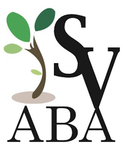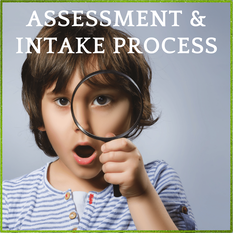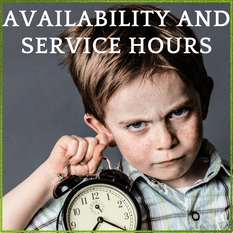Assessment and Intake Process
STEP 1: Referral
If you have insurance but do not yet have a referral from your doctor for ABA therapy, please contact your doctor or psychologist as soon as possible.
If there is an alternative funding source you are considering (such as a school district), contact them to discuss the matter first, as they may have in-house ABA staff or wish to reach out to SVABA directly.
If you are considering paying privately for ABA services, contact our main office line.
If there is an alternative funding source you are considering (such as a school district), contact them to discuss the matter first, as they may have in-house ABA staff or wish to reach out to SVABA directly.
If you are considering paying privately for ABA services, contact our main office line.
STEP 2: Assessment
All potential learners are assessed first to determine if they qualify for ABA services, the type of services for which they qualify. An assessment includes interviews with caregivers, behavioral observations, direct testing of the learner, and report-writing.
After the assessment is completed and documented, one of SVABA’s Board Certified Behavior Analysts® (BCBA®) will contact caregivers to inform them if their learner qualifies for ABA services, how many hours per week are being recommended, and the goals that are recommended for the next 6 months. This step in the assessment process is very important because SVABA will not make any recommendations that caregivers do not approve. Here are some examples of what may occur at this stage.
After the assessment is completed and documented, one of SVABA’s Board Certified Behavior Analysts® (BCBA®) will contact caregivers to inform them if their learner qualifies for ABA services, how many hours per week are being recommended, and the goals that are recommended for the next 6 months. This step in the assessment process is very important because SVABA will not make any recommendations that caregivers do not approve. Here are some examples of what may occur at this stage.
- Example 1: Based on the assessment, the BCBA recommends a 20-hour per week program to focus on language, flexibility, and play skills. The BCBA contacts the caregiver and reviews the recommendations. Caregiver agrees to the recommendations, and the BCBA submits the report to the funding source.
- Example 2: The BCBA makes recommendations that includes a 10-hour-per-week program that emphasizes alternative communication strategies, maladaptive behavior reduction, and a toilet-training program. Caregivers agree to the hours and goals except they are not ready to address toilet training at this time. The BCBA removes this goal from the report prior to submitting it to the funding source.
- Example 3: The BCBA recommends a 25-hour-per-week program but the learner is only available for 20 hours per week. The BCBA makes a recommendation for 25 hours per week based on clinical need, but requests only 20 from the funding source due to availability.
- Example 4: The BCBA recommends 30 hours per week, but the learner is only available 5 hours per week. In this case, the discrepancy is too high. The BCBA recommends either a parent-led ABA program or ABA is deferred at this time.
STEP 3: Program Development
After authorizations have gone through, caregivers are debriefed and informed of timelines and next steps.
Individualized program development is designed based on the assessment findings and the goals developed.
An initial behavior support plan may be created in order to address specific behavior of concern that arose during the evaluation and assessment process (if applicable).
Protocols are developed for each of the goals in very detailed written form in order to ensure consistency across everyone working with the child. Data is collected during every session in order to assess progress.
The clinical team will work with the learner directly for the first few sessions in order to develop strategies and fine-tune the program. After they have established a rapport with the learner, they will begin introducing the learner to the regular staff.
CLICK HERE to learn more about ABA personnel and their responsibilities in the program.
Individualized program development is designed based on the assessment findings and the goals developed.
An initial behavior support plan may be created in order to address specific behavior of concern that arose during the evaluation and assessment process (if applicable).
Protocols are developed for each of the goals in very detailed written form in order to ensure consistency across everyone working with the child. Data is collected during every session in order to assess progress.
The clinical team will work with the learner directly for the first few sessions in order to develop strategies and fine-tune the program. After they have established a rapport with the learner, they will begin introducing the learner to the regular staff.
CLICK HERE to learn more about ABA personnel and their responsibilities in the program.
STEP 4: Staff and parent training and support
All staff are trained in the implementation of ABA programs and behavioral methodology, and receive ongoing training every month. This training is essential but it is not enough. At SVABA, we believe that every learner is unique and deserves highly supervised staff. For this reason, our Direct Interventionists (DIs) are provided with initial training, in which they are given time to observe and interact with the child in both formal and informal situations alongside clinical staff. They are also trained specifically on the programming being used for the child to ensure strong treatment integrity. Support is provided on an ongoing basis through written communication as well as regular overlaps conducted sometimes in person and sometimes via Telehealth.
Parent training is offered and includes topics such as ABA principles, how to follow a behavior support plan, visual strategies, reinforcement, generalization, building social skills, and much more. Parent training is normally offered monthly, but may be offered more frequently depending on the individual circumstances.
Parent training is offered and includes topics such as ABA principles, how to follow a behavior support plan, visual strategies, reinforcement, generalization, building social skills, and much more. Parent training is normally offered monthly, but may be offered more frequently depending on the individual circumstances.
STEP 5: Ongoing programming and training as needed
Programming is continuously being updated and added as the child develops a higher skill level, and subsequent training follows as appropriate.
STEP 6: Re-Assessment
Every 6 months, learners are formally reassessed. A report is written and submitted to the funding source to evaluate progress toward goals and to make revised recommendations for the upcoming authorization period. These recommendations are reviewed with caregivers prior to submission.
Copyright © 2015 | 7500 Arroyo Circle, Suite 180, Gilroy, CA 95020 | 408-418-7121 |



